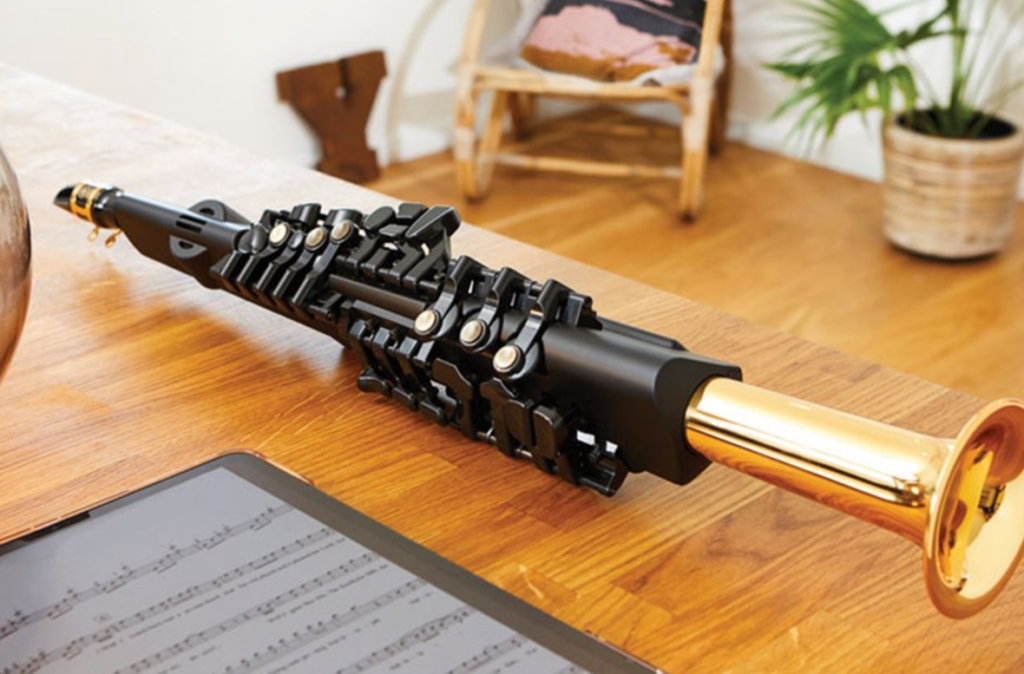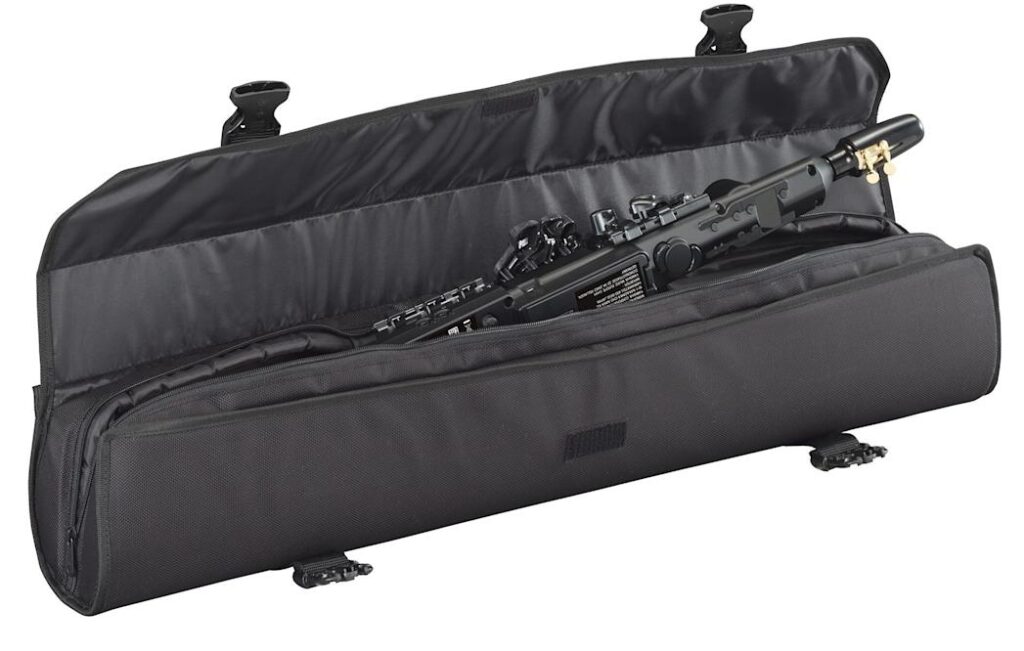The world of digital instruments is very competitive and constantly new instruments are being released. The Yamaha YDS 150 fits into this category and has been very well received by the market.
We’ve done our research and here’s a list of details and things to take into consideration about the Yamaha YDS 150 digital saxophone.
About Yamaha
Yamaha is a Japanese multinational corporation with a wide range of products and services, including musical instruments, semiconductors, audio visuals, computer related products, sporting goods, home appliances, specialty metals and industrial robots.
Over the years it has grown to become the largest manufacturer of musical instruments, including pianos, drums, guitars, brass instruments, woodwinds, violins, violas, celli and so forth.

What is Yamaha YDS 150 saxophone
Released in late 2020, the Yamaha YDS 150 digital saxophone was developed as a synthesized electronic instrument for saxophonists by combining the layout of a regular sax with the functionality of a wind synth, rendering an incredibly versatile and easy to play instrument.
So, the union of both the synth and the sax gives you the ability to create your own custom sounds and upload them to the saxophone, while maintaining the playability of a traditional saxophone.
These are features that allow you to experiment and create more freely and makes the playing experience way more fun and creative at the same time.

What comes with it
In order to make it feel like a real saxophone, the Yamaha YDS 150 comes with many components that replicate the look and feel of an acoustic sax. For example, it comes with a real mouthpiece with ligatures and reed, although the reed doesn’t vibrate which means that if the saxophone synthesizer is not turned on it won’t produce any sound.
It also has a bell at the end but in this case, it’s not curved, and it serves to hold the built-in speaker you can plug into an amplifier or headset.
Key work is spot on what you would expect on an acoustic sax, and they have an analog feel to them which will trigger muscle memory and facilitate getting used to the new set up. There’s even a controller on the side for pitch bend and vibrato control and the default setting is to play on low A.
Overall, the Yamaha YDS 150 feels very much like a normal saxophone, opposed to earlier versions, and with minor adjustments you can get used very easily to using this instrument.

Overall Appearance and build quality
The YDS 150’s body is a black polymer straight and rigid saxophone, with keys along the body that go down to the bell at the bottom, closely resembling a soprano sax.
The position of the keys and tone holes is the same as in all types of saxophones and the color combination of the materials used make this synth sax look sleek and modern, with the body and keys in solid black and the bell and some highlights along the body made from shiny brass.
The tone and sound
The sound produced by the Yamaha YDS 150 is deep and rich, very much like what you would expect from an acoustic saxophone. Also, the saxophonist can adjust the octave he/she wants to play at, spanning 8 octaves from baritone to soprano, making it a very versatile digital sax.
But, since this is a saxophone synthesizer, you can play an array of sounds available to other wind synths or create your own sounds with its mobile app, a feature that an acoustic sax doesn’t have, and that converges in a clear and smooth tone.
The bell and neck have speakers of great quality and, if you want even more volume and depth, you can also plug your synth sax into an amplifier or to a set of headphones as an alternative to a sax mute.
Overall, the versatility and creative freedom provided by the Yamaha YDS 150 makes it a very interesting instrument for amateurs and professional sax players alike.

The looks
We already spoke about the aesthetics of the YDS 150, but another detail about this digital saxophone is its size and weight. A traditional saxophone relies on a specific size and shape to produce the correct sound, but these restrictions don’t apply to the Yamaha digital sax making it less bulky and easier to carry around than an acoustic sax.
The Yamaha digital saxophone weighs around 2.2 lbs, compared to the 6lbs or more of a traditional sax, and it’s also about 4 inches in diameter making it way more manageable and playable, especially for beginners.
Finally, this electronic sax is just 2.5 feet long, making it easy to carry, hold and play, and you won’t even require a neck strap or harness for long playing sessions, although it comes with one included.
Ease of play
Play wise, the Yamaha YDS 150 plays almost the same way as a classic saxophone and has its keys, tone holes, and octave pin in the same place, as well as a functional mouthpiece with the difference that the typical curved bell is not present.
Breath pressure resistance allows you to flow through different pitches and volumes, but the added feature of the Analog Controller gives you the ability to alter and transform notes.
The amazing sound quality of the Yamaha YDS 150 digital saxophone makes it one of the most innovative and the best electronic saxophone available.

Additional properties
The brass bell on the end of the YDS 150 contains one speaker for when you’re playing with an amp or headphones, but it doesn’t provide much functional use besides a visual to set it apart from other wind synths.
The mouthpiece has breath pressure resistance, meaning that if you blow lightly the sound will be quiet and if you blow hard the sound will be louder. The rigid plastic reed is held in place by a ligature and, although it doesn’t have any bearing on the notes it produces you can manipulate the notes by using the Analog Controller, which allows you to add pitch bend or vibrato to the notes playing.
You can also use the YDS Control app where you could modify your Yamaha electric saxophone’s sounds and even create custom notes. The Yamaha YDS 150 is also compatible with a variety of music software allowing you to compose while you play.
Is Yamaha YDS 150 good for students?
You must keep in mind that this is not a traditional saxophone and, although it was built to replicate somehow its’ look and feel, learning to play on a saxophone synthesizer will not be the same as learning on the real instrument. In fact, the different features and tools it provides could confuse the student and develop faulty techniques.
If you already know how to play the saxophone then this would be a fun alternative for practice and your creative process, because experience would allow you to identify what’s correct and what’s not in correct saxophone manipulation.
Upsides in contrast to classical saxophones
Since the Yamaha YDS 150 was designed with the layout of a regular saxophone in mind but with the added functionality of a wind synth, this electronic saxophone is a wonder to play.
The wide array of sounds available and how the instrument allows you to create your own custom sounds and upload them directly to your sax, give this instrument versatility and distinction among its peers.
The way you can manipulate and experiment with your sound gives you a limitless possibility to create your own sound, and the added benefits of the Analog Controller that gives you the power to alter and distort notes opens a whole new universe of music making.
Since this is an electronic sax, power supply comes from either 4 AAA LR03 batteries, or a USB connection you can plug into a power bank or a computer, and the control buttons are strategically placed to ease playability and the embossing on them are helpful for saxophonists with poor sight.
Downsides in contrast to classical saxophones
However, as with everything, there are things to consider about using a saxophone synthesizer and that could be improved. For example, the mouthpiece doesn’t allow you to alter the sound with the reed as a classical saxophone would. Since the hard plastic reed doesn’t have any practical use, this can be an issue for professional players accustomed to adding vibrato through the mouthpiece and even become an obstacle for amateurs who want to learn these techniques.
Key sensitivity is also different and although it has the option to increase and decrease the sensitivity of the keys, it may require some adjustments and getting used to if you are an experienced sax player because the default setting is much less responsive than a normal saxophone.
Although the buttons on the instrument give it functionality, the instrument requires to be used with the YDS Controller app to operate correctly and give you its full range of features.
overall the sound and the feel of the instrument might feel a bit off when accustomed to the traditional saxophone. If you’re more into a classical jazzy sound of the saxophone, you can check our other article where we list some of the best saxophones to play jazz in 2022.
Conclusion
Among other options of digital saxophones, if you search for Yamaha digital saxophone review, the YDS 150 is ranked as top tier because of its look and feel, as well as the many features it includes to improve the players experience with such an instrument.
As we’ve established before, this is a fun sleek-looking synth sax that could be in creative processes and as an alternative for a saxophone mute for experienced or intermediate saxophonists.

